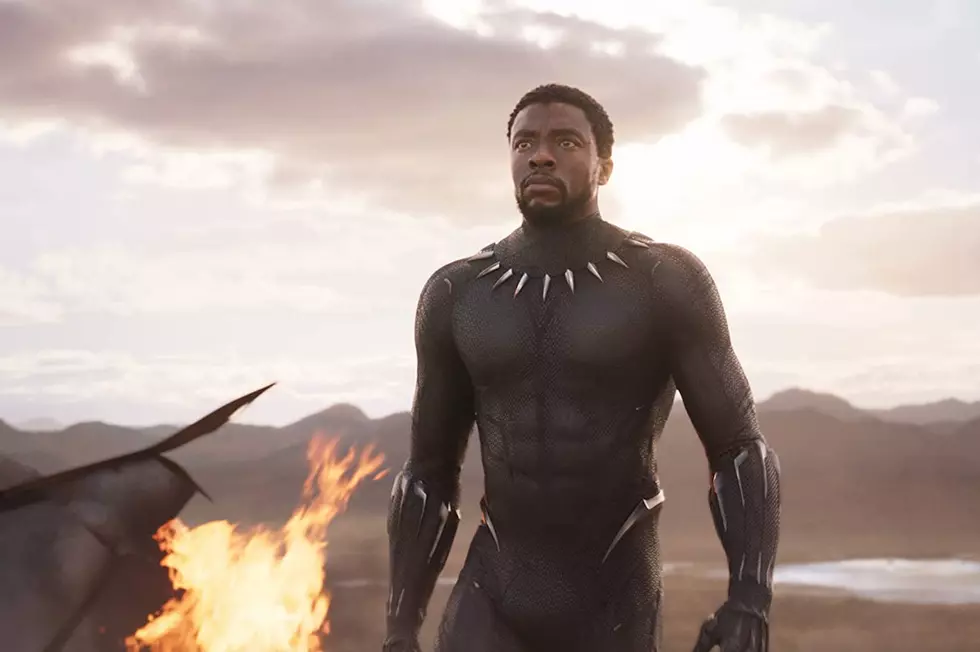
How Black Panther Pioneered Modern Comics With ‘Panther’s Rage’
The revisionist history of superhero comics would have you believe that the genre didn't take itself seriously until 1986 and The Dark Knight Returns. Before that, we're told, it was all Super Friends and Imaginary Stories.
One of the major misconception that informs this idea is that, prior to 1986, there were no serious superhero stories. That's emphatically untrue. The late Silver Age and Bronze Age were full of dark, mature superhero stories ---"The Death of Ferro Lad," "The Night Gwen Stacy Died," etc, --- but there's one in particular that stands above the rest for how much it foreshadows the current mood of superhero storytelling; "Panther's Rage," a 13-part epic that ran bimonthly in the pages of Jungle Action from 1973-1975.
Written by Don McGregor and pencilled by Rich Buckler, Gil Kane and Billy Graham, with inks by Klaus Janson, P. Craig Russell and Bob McLeod, and colors by Glynis Wein, "Panther's Rage" was the first great Black Panther story, combining a thrilling saga with a series of great stand-alone tales.
Jungle Action had been around since the Atlas Comics days, mainly featuring stories of white jungle heroes like Lo-Zar, Lord of the Jungle (who's definitely not Tarzan), Leopard Girl, and so on. A new volume launched in '73, consisting of reprints of the original stories.
McGregor, then Marvel's official proofreader, complained to editorial that the book's concept was hopelessly outdated, to which editorial responded, "OK, let's see you do better." After a reprint of an Avengers story where Panther takes Black Knight, Vision and Hawkeye to Wakanda and they fight M'Baku the Man Ape --- and Hawkeye is a whiny tool the entire time --- McGregor and Buckler got their chance. The only restriction they had, according to a 2008 McGregor interview in Back Issue, was that the stories had to be set in Africa.
In the first part of their story, also called "Panther's Rage," McGregor and Buckler introduced the fearsome, bare-chested, spiked-whip wielding Erik Killmonger and his bumbling lieutenants Tayete and Kazibe. They also reveal that Panther has brought his American girlfriend Monica Lynne to Wakanda, much to the dismay of his court, which includes second-in-command W'Kabi, the more compassionate Taku, and handmaiden Tanzika.
"Rage" ends with Killmonger throwing T'Challa over a waterfall. The following chapter, "Death Regiments Beneath Wakanda," shows that scene from a different angle and leads into the first of many absolutely gorgeous splash pages.
Seriously, did Buckler or Graham get awards for this stuff?
The entire story follows a formula: T'Challa gets out of one life-or-death scenario, winds up in a different part of Wakanda, and gets embroiled in another almost-certainly fatal peril. As a way to keep contemporary readers' interests over two years, it's a compelling structure that offers plenty of scope for adventure. But there's more at work here.
McGregor takes time to flesh out the grievances and struggles of every supporting cast member. There are pages devoted to the alienation Monica feels as a stranger in a strange land. There are heartbreaking subplots about the breakup of W'Kabi's marriage, and how the death of one farmer absolutely devastates his widow and son. All this, plus epic scenes of Black Panther tricking a bad guy into killing a pterodactyl with an exploding arrow.
Although Killmonger is an outright monster, he too earns some sympathy. See, it turns out that back when Ulysses Klaw ruled Wakanda, Killmonger --- real name N'jadaka --- saw his father worked to death in the vibranium mines, and swore revenge on King T'Chaka and his son for abandoning them.
Everyone in "Panther's Rage" has shades of grey like that. Tanzika is a loyal handmaiden... but she also tries to frame Monica for murder out of jealousy. W'Kabi is fiercely loyal to his country --- perhaps too loyal, as his subplot implies --- but is angered by the encroachment of modern technology. Taku strikes up an unlikely friendship with the villain Venomm after his capture by T'Challa.
Speaking of T'Challa, he gets put through hell. Death by waterfall, extreme heat and cold, wolf attack, and being bashed into a rock by leopards are just some of the traumas Panther endures. And he doesn't get away cleanly. His costume gets torn to shreds, he's battered and torn and bloody. At some points, he can't even speak because of how exhausted he is. It's a rocky journey and the reader lives through every minute of it.
"Panther's Rage" is not only a great example of serious superhero action before 1986, it's also a masterclass in serial storytelling. The late, great Dwayne McDuffie said of the story, "This overlooked and underrated classic is arguably the most tightly written multi-part superhero epic ever. ... It's damn-near flawless, every issue, every scene, a functional, necessary part of the whole ...You'll find seamlessly integrated words and pictures; clearly introduced characters and situations; a concise (sometimes even transparent) recap; beautifully developed character relationships; at least one cool new villain; a stunning action set piece to test our hero's skills and resolve; and a story that is always moving forward towards a definite and satisfying conclusion. That's what we should all be delivering, every single month. Don [McGregor] and company did it in only 17-story pages per issue."
How can you argue with an endorsement like that? And if you want to read the story for yourself, you're in luck. The previous Marvel Essential and Masterwork collections are out of print, but Marvel is releasing an Epic Collection in September. If you want to rediscover one of the overlooked classics of superhero literature, this is your chance.
Check Out Some Black Panther Facts You May Not Know
More From ComicsAlliance








![A New Team Bands Together In ‘Black Panther & The Crew’ #1 By Coates, Harvey, And Guice [Preview]](http://townsquare.media/site/622/files/2017/03/Black_Panther_The_Crew_1_Featured.jpg?w=980&q=75)
